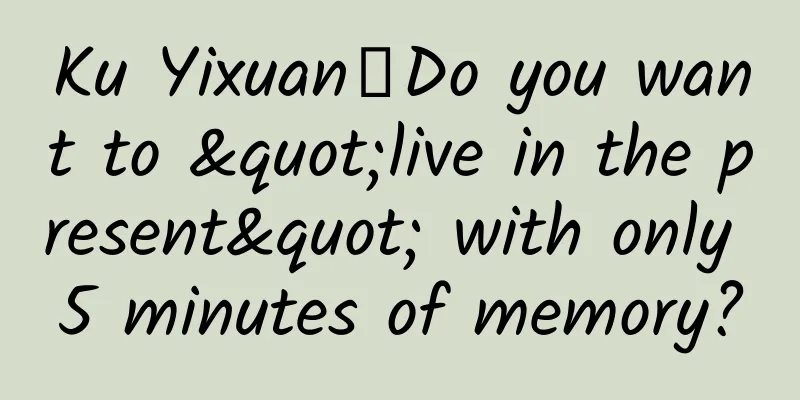It took three years to get rid of the bangs on the iPhone. What’s wrong with it?

|
Recently, Jon Prosser, a well-known Apple whistleblower, released two pictures containing CAD illustrations of Apple’s second half flagship, the iPhone 12. Judging from the picture, the "bangs" of the iPhone 12 will be smaller, which will be officially distinguished from the "big bangs" of the iPhone in recent years. As a whistleblower, Jon Prosser has previously accurately predicted the release time of the iPhone SE, accurate to the hour, so his revelations are relatively credible. Moreover, in the earlier iOS 14 code leak, the developer also found an iPhone icon with a reduced "bangs". The bangs of the new iPhone in the picture are also similar to the leaked information, and there is more similar evidence and whistleblowers. But even so, Xiao Lei is still not satisfied: Android's notch screen has been eliminated, why hasn't Apple achieved it after three years? The evil bangs When the iPhone X was released in 2017, the bangs became the target of criticism from mobile phone enthusiasts around the world. Jony Ive, then Apple's chief design officer, was also mocked and ridiculed. In fact, Jony Ive has also expressed his compromise on the design of iPhone X on other occasions. He believes that the bangs are the best solution Apple can find at present. For the moment, it is inevitable, but it will slowly fade away with the passage of time. In Jony Ive's opinion, the experience brought by the full screen is more important than the bangs. He compared the design style of iPhone X with an infinity pool. The "edge-to-edge" design allows the audience to immerse themselves in the content. In order to display as much of the status bar as possible, Jony Ive also opposed directly displaying the upper edge in black.
At that time, Apple was indeed qualified to say these words. After all, compared with iPhone 7, the screen-to-body ratio of iPhone X was greatly improved. At that time, except for radical products such as MIX, all Android products had a screen ratio of 18:9, and there were still chins at the top and bottom.
In the default wallpaper of iOS 11, Apple also cleverly changed the upper half of the coast wallpaper to a dark color, so that the bangs can't be seen at first glance. And in the subsequent XS and 11 Pro, Apple also used a similar method, with a black wallpaper made of foam, which "just" perfectly covered the position of the bangs. But while Apple tried its best to cover up the bangs, it couldn't hide the rapid development of Android's full-screen phones. Half a year after the launch of iPhone X, OPPO and VIVO made true full-screen models with pop-up cameras. Nowadays, Android's full-screen, under-screen fingerprint, and narrow bezels are standard, but some choose perforated screens, and some hide the modules in the bezels, but all have a higher screen-to-body ratio than the iPhone, which has remained unchanged for three years.
The iPhone only made changes this year due to the drag of Face ID. Face ID’s “Dugu Qiubai” Amid the wave of condemnation of the notch design, Apple’s most important reason is the safer structured light module. Apple claimed at the press conference that the security of Touch ID is that only one in 50,000 people can unlock it, while Face ID requires one million people to unlock it. But at the same time, Face ID requires a flood illuminator, a dot matrix projector and an infrared camera to form a dot matrix and infrared transmitting and receiving device. The module is difficult to shrink. In fact, Face ID on the iPhone X is the result of Apple's efforts for several years. I believe everyone has seen Kinect from Prrme Sense, the original developer of Face ID. Face ID is a miniaturized version of Kinect's structured light module. Of course, within a year of the release of iPhone X, Android also launched a number of notch screens, but they are all based on traditional binocular recognition for unlocking, or infrared unlocking, all of which apply existing recognition algorithms with low accuracy and low security. Of course, OPPO, Huawei, and Xiaomi also came up with their own structured light solutions later. However, in order to achieve a full-screen design, OPPO resorted to using an up-and-down lifting back cover, which increased the failure rate and hindered heat dissipation. Huawei and Xiaomi still kept the bangs. Moreover, OPPO's dot count is half that of Apple's. Xiaomi's coding is regular coding, which is easier to crack than Apple's speckle. Huawei's is similar to Apple's, but its bangs are not much smaller than Apple's. Mate 20 Pro has also been ridiculed because of its bangs. The biggest obstacle to Android structured light is Google and the domestic software ecosystem. Google does not provide relevant APIs for structured light. This is the first problem. If WeChat and Alipay do not negotiate, structured light will have no foothold in China. OPPO has established a payment-level structured light cooperation relationship with Alibaba long ago, so the first Find X can be paid by face recognition, while the structured light of Mate 20 took several months to negotiate. The payment barrier of Alibaba and Tencent is the main obstacle to the popularization of structured light. If the "protection fee" is not paid, the high-cost structured light can only be unlocked. Apple doesn't have to worry about this problem. The payment APIs for Touch ID and Face ID are in Apple's hands and can replace each other. As long as you support Touch ID, it will be automatically replaced by Face ID in the full-screen mobile phone. There is no room for Tencent and Alibaba to intervene. However, as the under-screen fingerprint technology was finally perfected, VIVO began to turn to optical under-screen fingerprint. In fact, in terms of security, under-screen fingerprint is not as good as traditional capacitive fingerprint. But the emergence and large-scale application of under-screen fingerprint has given other Android manufacturers another way out.
In addition to facial recognition, Huawei has launched front-end ToF. Although ToF is also a 3D unlocking solution, it is mainly used for 3D recognition in a large environment half a meter away rather than for faces. On the one hand, Huawei wants to retain some facial recognition technologies, and on the other hand, it wants to explore the feasibility of ToF. However, so far, Huawei has very few related products of front-end ToF. Since then, the Android industry has been divided into two schools: pop-up cameras and punch-hole screens. There was once a plan to put the camera on the frame, but this means that the front camera module is very low, perhaps less than 500W, and the speaker design is also a problem. After all, the screen sound cannot compare with traditional speakers, and being able to open it on the frame is already the limit. Therefore, the "true full screen" in the picture above is almost impossible. Even the current 11's border cannot accommodate a front camera. The 11 Pro's border is 4mm, which is one of the narrowest borders of mobile phones today. If the border is not enlarged, it is impossible to accommodate a front camera and a structured light module. Therefore, the best Apple can do now is to make the bangs smaller, but not completely eliminate them. Apple has chosen the security of Face ID, so it must accept the "huge" disadvantage of Face ID. Relying on its design reputation, technology research and development, and software ecosystem, Apple has protected the bangs for three years, but it has not yet found a good direction. The future belongs to under-screen cameras? However, for Apple, the biggest challenge this year is the mass production of under-screen cameras. According to current intelligence reports, the future Galaxy Fold is likely to be equipped with an under-screen camera, and Samsung's New Infinty design is gradually becoming a reality.
Of course, there are still many problems with under-screen cameras. Although OLED can transmit light, the impact of transmittance and diffraction is still very large. Except for the demonstration video, we have not seen any manufacturer release actual photos of the under-screen camera. Moreover, in order to solve these problems, the software algorithm is one of them, and the screen area above the camera must also be modified, and even the PPI cannot be too high. The practice of "cutting" the two screens is bound to bring about inconsistency in the look and feel. But having said so much, in 2020, Apple's "shrinking bangs" has completely lost its original sense of surprise. Android's experience tells us that consumers don't really care about the advancement and security of technology. Under-screen fingerprint recognition is a technology that protects against good people but not bad people, but that's enough. Apple's current embarrassing situation is the result of being kidnapped by Face ID and unable to back down. The only thing we can expect is that Apple will make progress in AR, not just Animoji. After all, some people have tested that Animoji technology does not need to rely on Face ID at all. Apple's AR strategy is the key to the survival of structured light in the future. I hope that the ToF structured light module on this year's iPad and iPhone can bring us Apple's new answer to AR.
Watching: Will the iPhone 12 with a small bangs make you excited? |
<<: QQ21 years old: How to make money from this generation of young people
>>: Using coroutines in Android development | Getting started guide
Recommend
Li Siguang: His light spread far and wide, and he was of great use to the country
Li Siguang was born in Huanggang, Hubei in Octobe...
Glowing plants are here! Maybe they will be your next desk lamp?
In the fantasy world of literary works, glowing p...
Breaking down the user life cycle of Toutiao!
This article analyzes the basic situation of Tout...
Soul competitive product analysis!
Socializing with strangers is something that many...
Data Methodology | 5 Steps to Analyze Your Own Product Operation Data
Due to the internal development of the company, T...
How Google's Universal Search Ranking Works: Search Is Much More Than PPC
Introduction Since Google introduced the universa...
Xiao Fei Da Xia Training Camp Episode 9 Baidu Cloud Download
Resource introduction of the ninth phase of the L...
Multiple terminals and one number coexisting? WeChat "Secondary Device Login" interface exposed
[[405423]] Previously, many users were upset that...
Baotou SEO training: What impact will server instability have on website optimization?
Many webmasters have encountered situations where...
An incomplete summary of the new changes in WeChat 8.0: Which of the 16 changes are you most satisfied with?
Recently, WeChat version 8.0 was launched on iOS ...
15 very "powerful" copywritings that are worth your consideration!
All the elements in an advertisement are for one ...
Tips on how to limit the flow of Xiaohongshu notes and strategies for making them popular!
The Difficulties and Opportunities of Xiaohongshu...
Tooth extraction can really kill you! From hammering teeth to minimally invasive techniques, here's a look at the evolution of human tooth extraction surgery!
Tooth extraction is a "terrifying" oper...
The latest generation of Android system is here! Detailed analysis of the new features of Android 12
Google held its annual Google I/O developer confe...
If the universe is a "dark forest", why do we go to so much trouble to look for aliens?
Text|Li Yuebai and Jiang Xiaoyuan Recently, news ...









